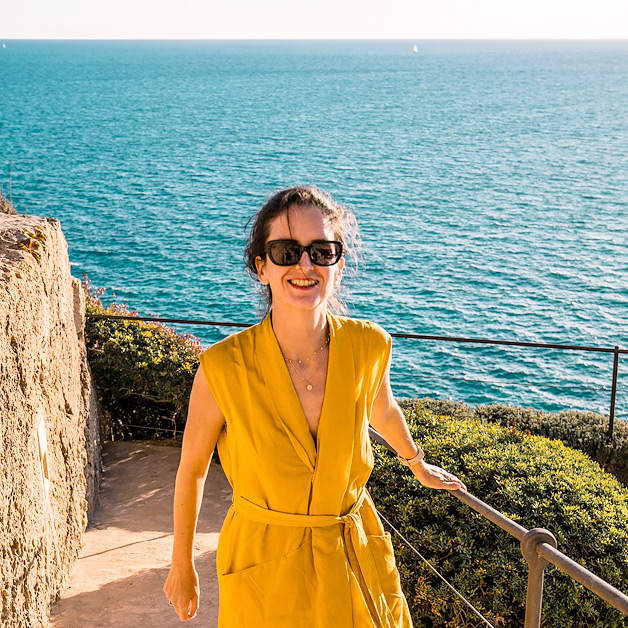Granada Cathedral is one of the most important monuments in the city, ordered to be built in 1505 on the orders of Queen Isabella, on a former location of the Alhambra mosque.
Due to the size of the project, a new location for the Cathedral was found, in the center of the city, by demolishing the old Mosque.
The cathedral’s construction marked the transition from Islamic rule to Christian dominance, and its architecture serves as a tangible symbol of this transformative period. The meeting of Gothic and Renaissance styles mirrors the city’s multicultural past and its journey toward a unified identity.
In this article, you will find a short photo tour, a brief history of the Cathedral, along with practical tips to plan your visit. At the end of the article I linked all ticket options, but the most popular one is right below.
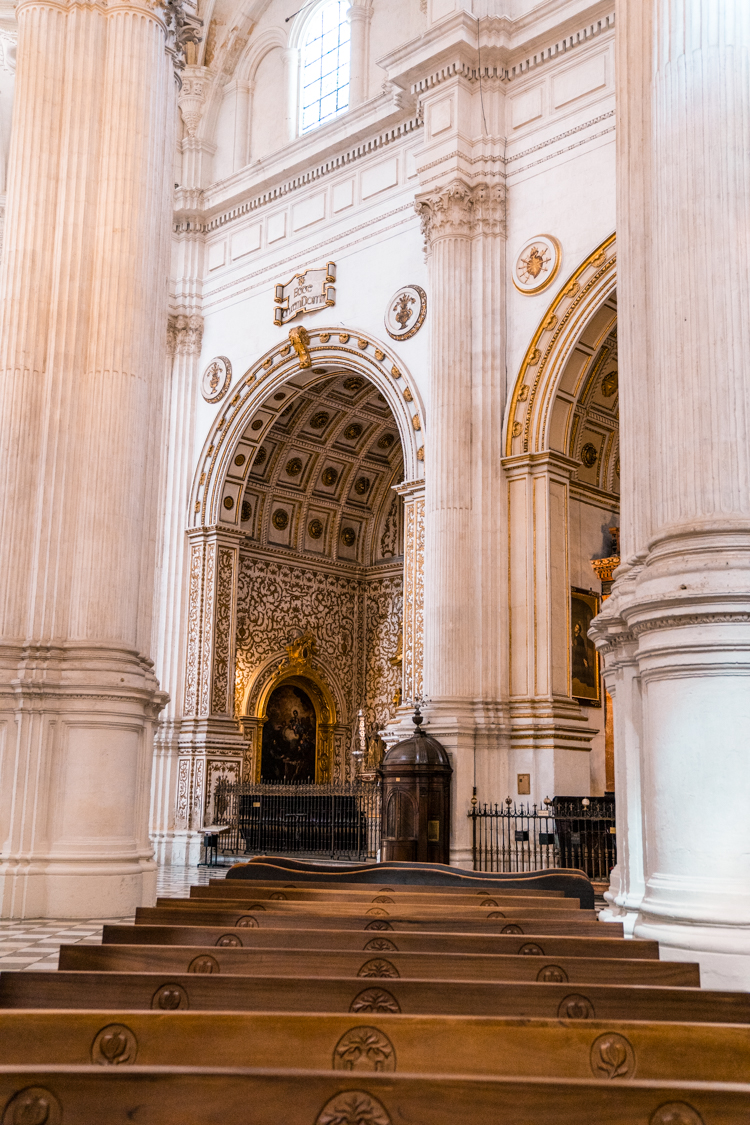
What You Need to Know
The Cathedral is known as the Cathedral of Incarnation (Catedral de la Encarnación), and it’s only a short walk away from the Albaicin neighborhood.
The construction began in 1518, and like many other cathedrals of Andalucia, it was built on top of an old mosque following the recapture of Granada by Christian monarchs.
The original plan was for a Gothic Cathedral, as is evident in the Royal Chappel but finished in the Spanish Renaissance style which was prevailing at the time of the build. The Cathedral took 181 years to build, and it would have taken probably longer if they also added the originally planned 81-meter towers.
The Royal Chappel
The Royal Chappel is the burial place of the Christian Monarchs, Queen Isabela I and King Ferdinand. It also contains a gallery of artwork and other items associated with Queen Isabela I.
The Chapel was built between 1505 and 1517 in Gothic style, and dedicated to St. John the Baptist and St. John the Evangelist.
It is not possible to enter the Chappel directly from the Cathedral, it has a separate entrance (pictured below) and you will need a dedicated ticket with a time slot. There is no photography allowed (which put me off from visiting).
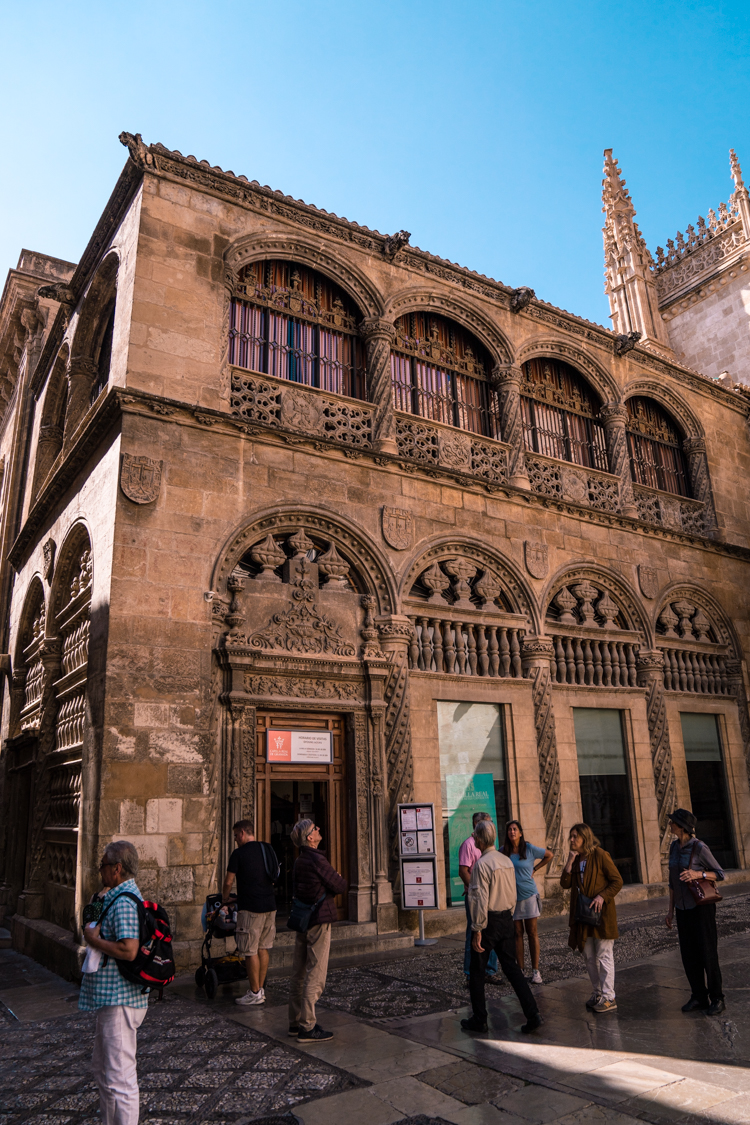
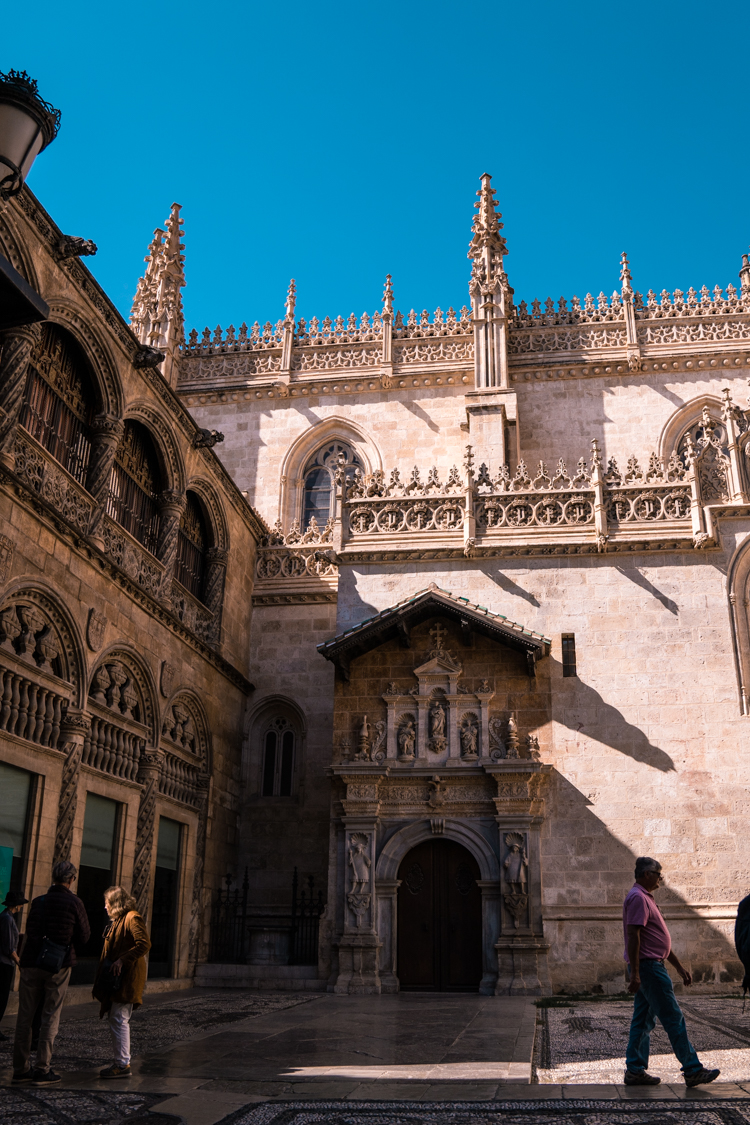
Inside the Cathedral
The inside of the Cathedral offers a stunning contrast of the Renaissance architecture emphasized by the use of light, and the opulent golden Capilla Mayor (main chapel).
The grand white pillars are beautifully illuminated by light and create an almost heavenly-like view when you observe the ceiling.
The main altar and cupola are truly breathtaking and worth spending some time admiring all the details.
Pictures tell the story better than words will, so here is a short photo tour!
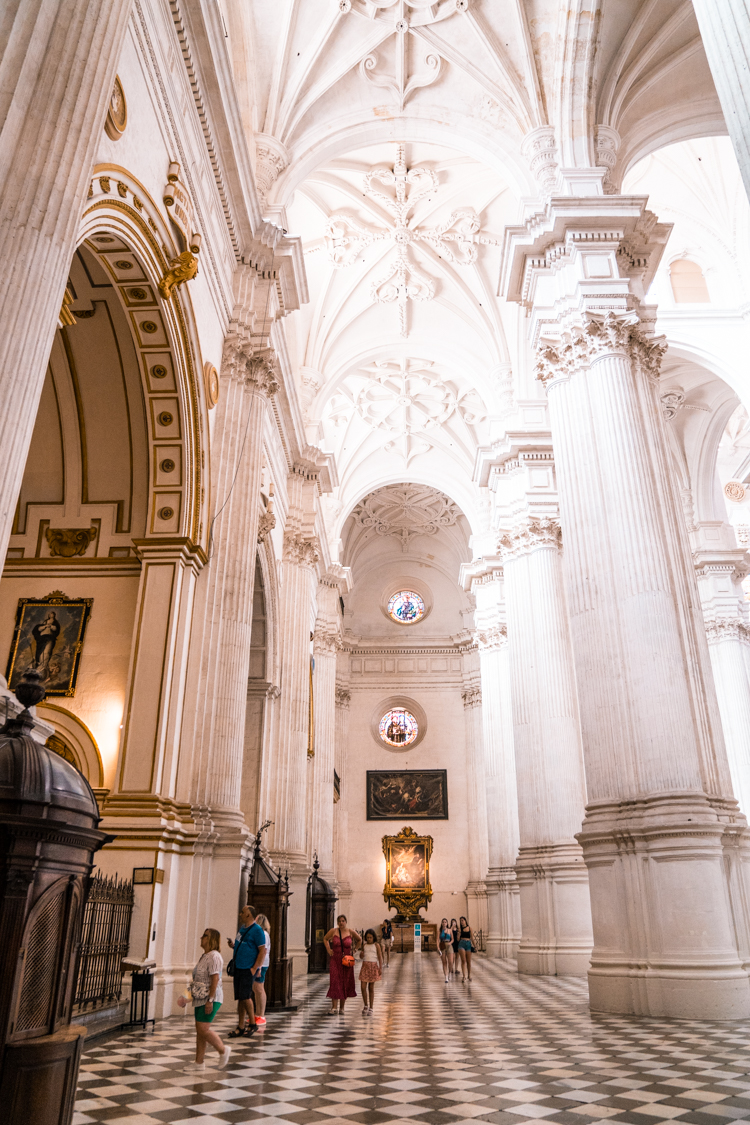
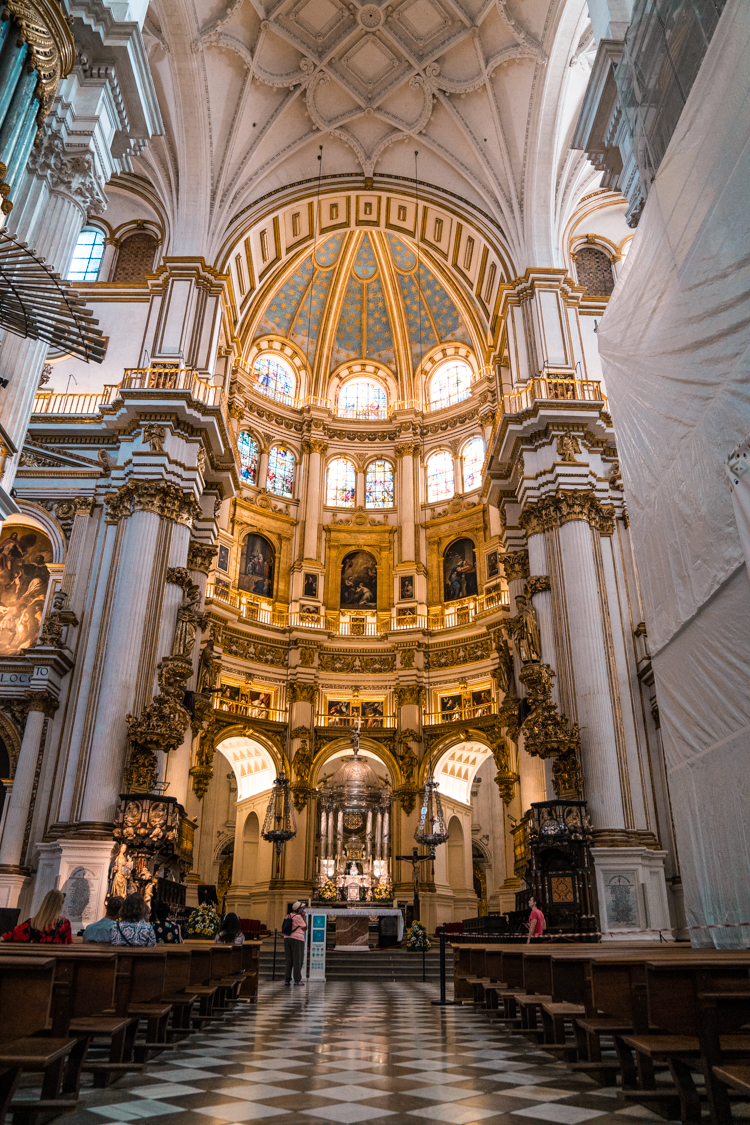
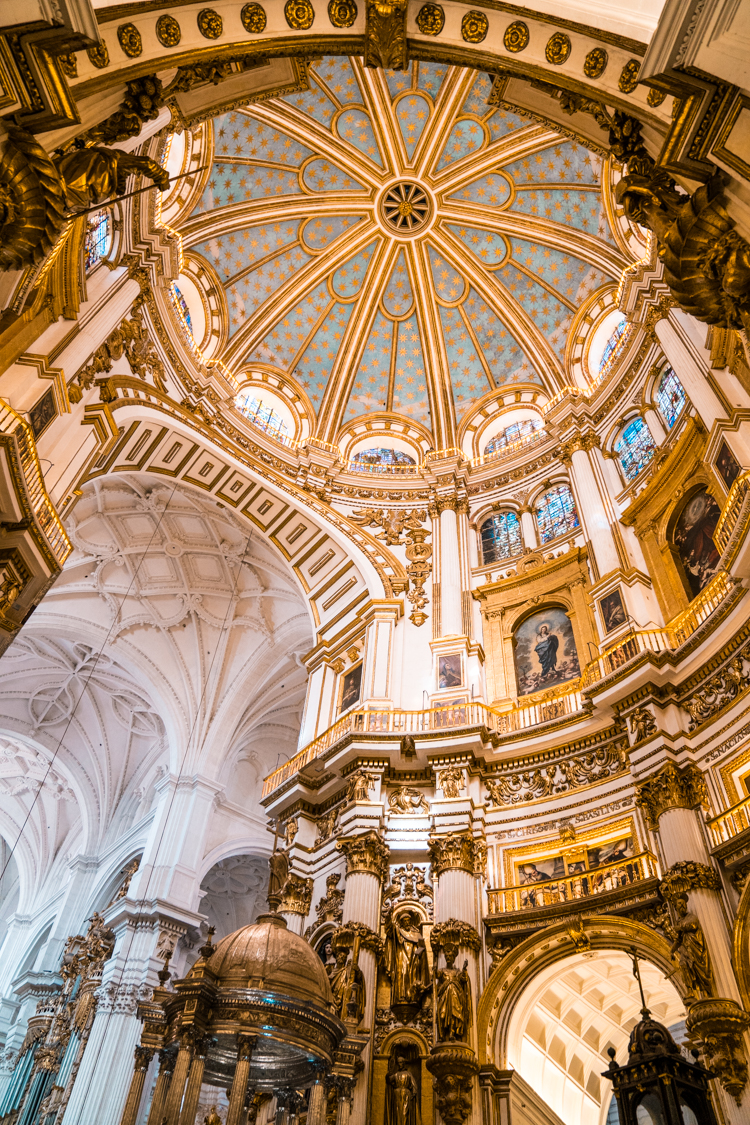
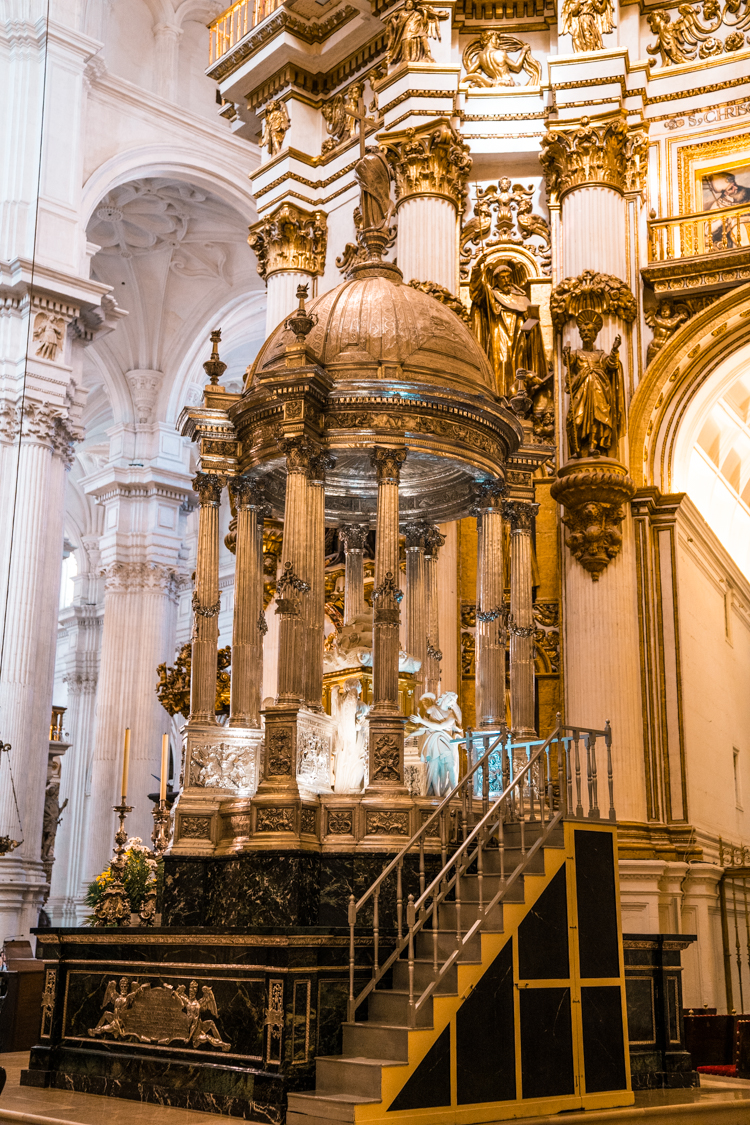
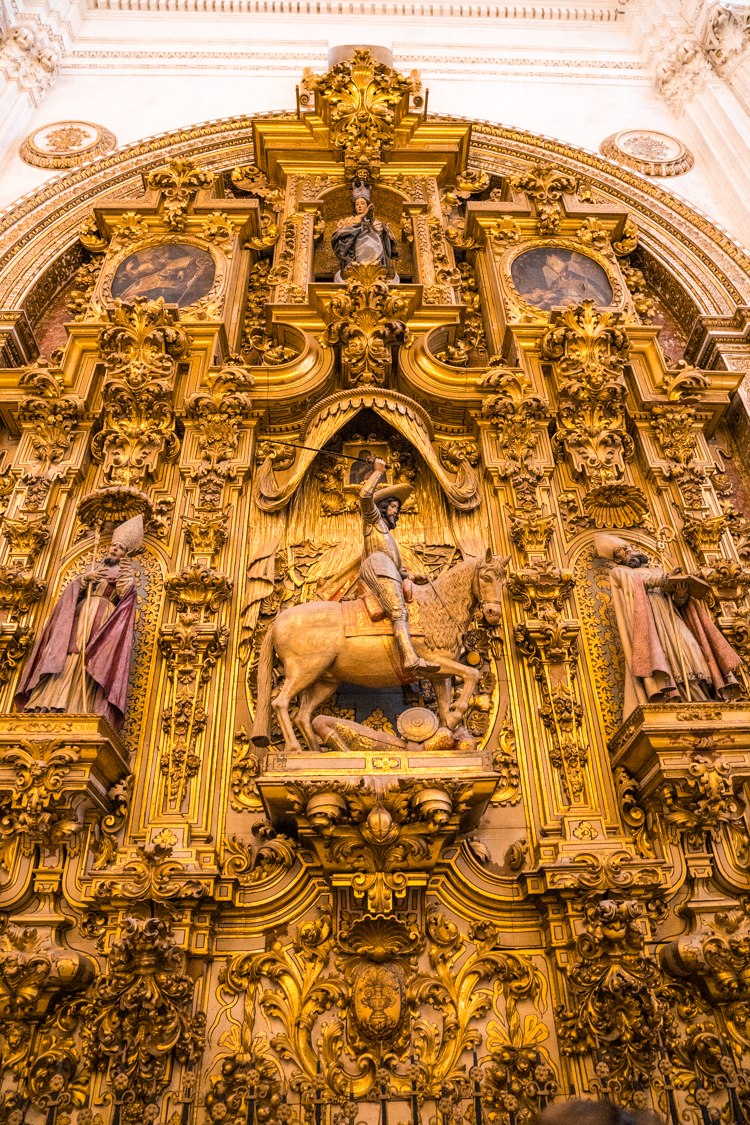
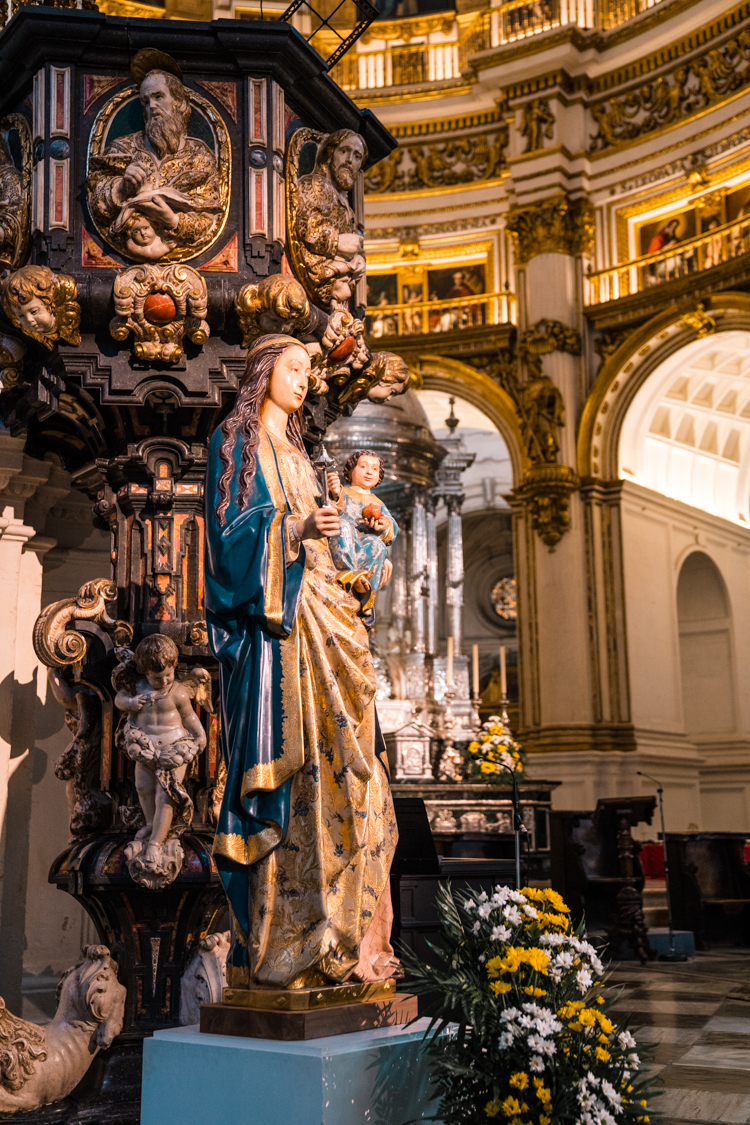
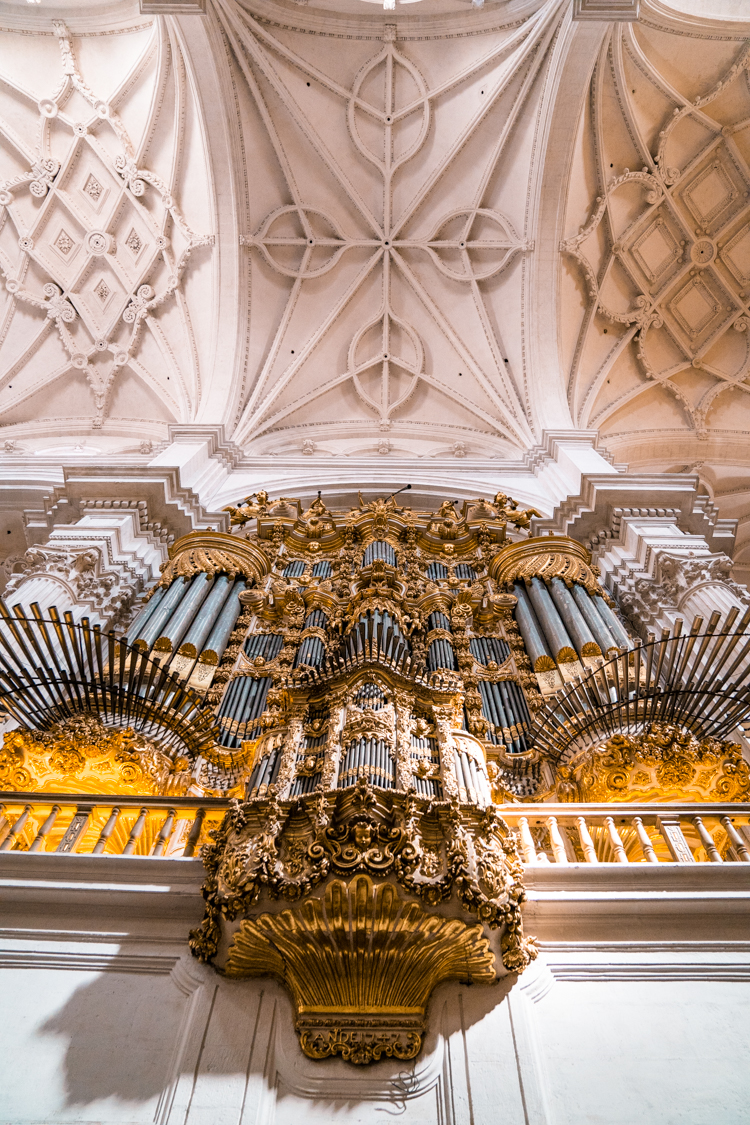
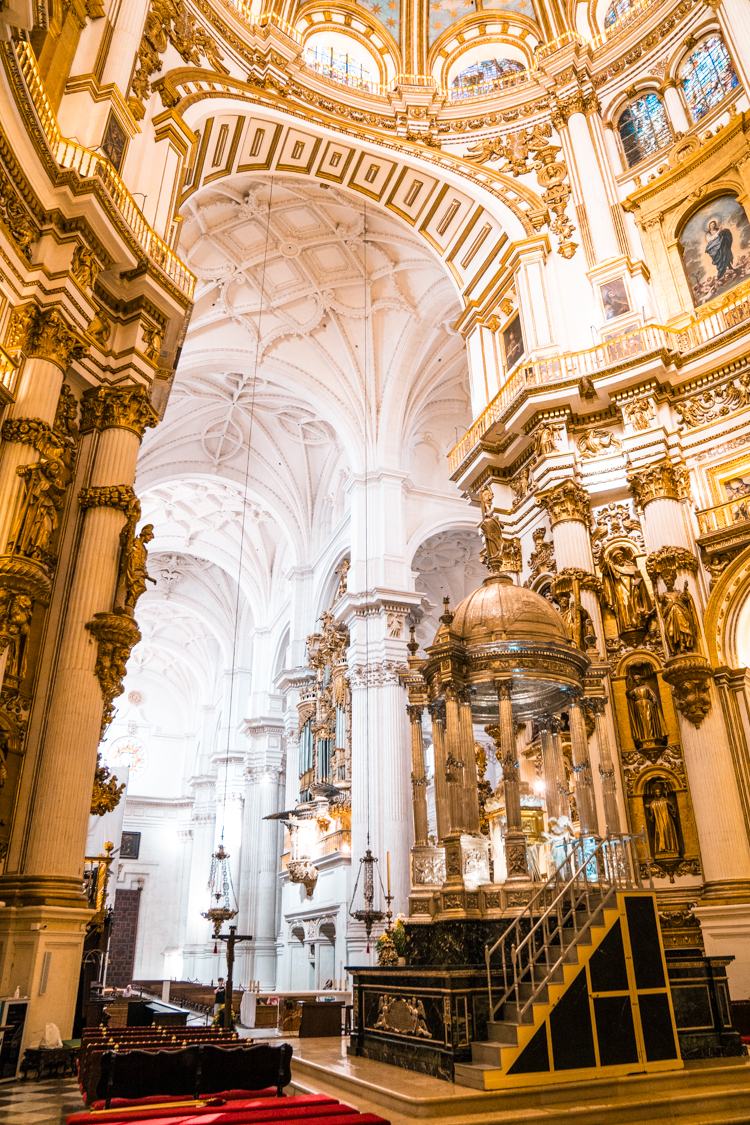
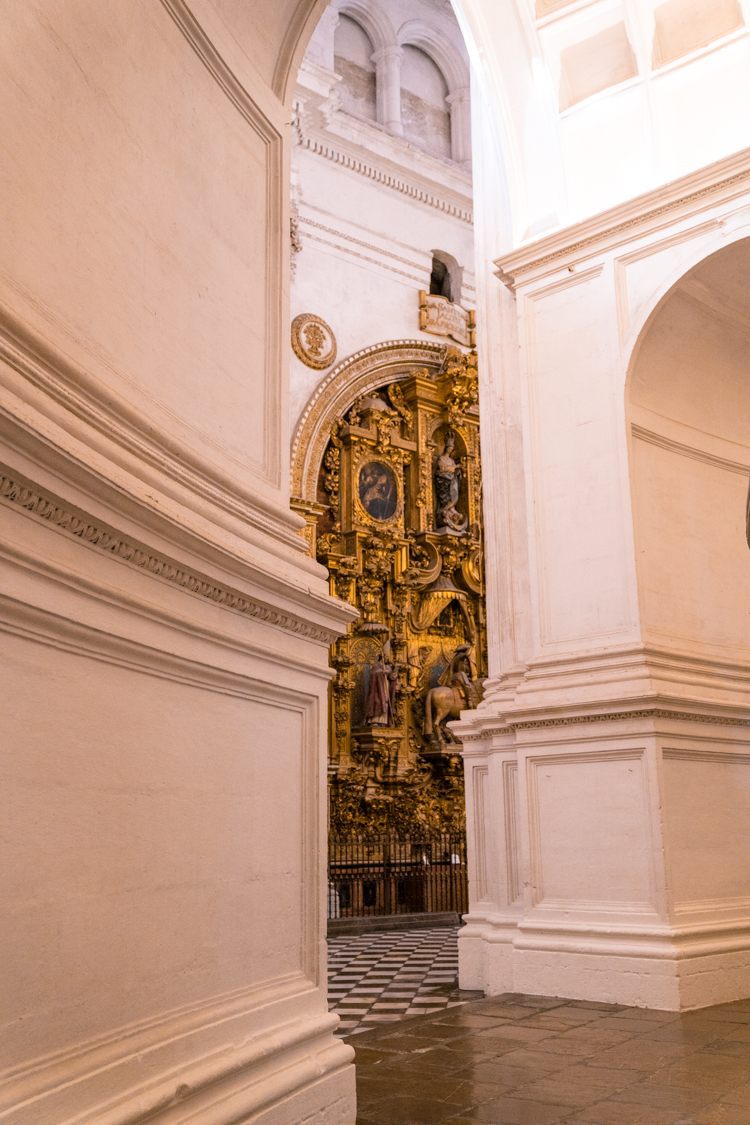
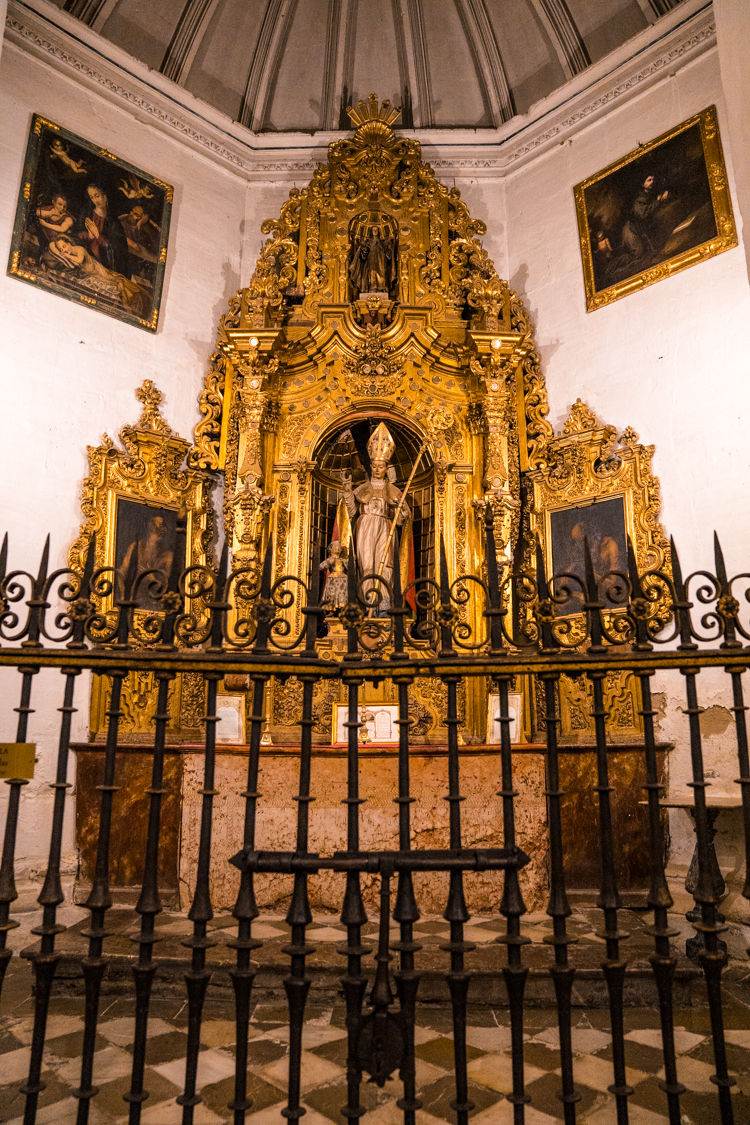
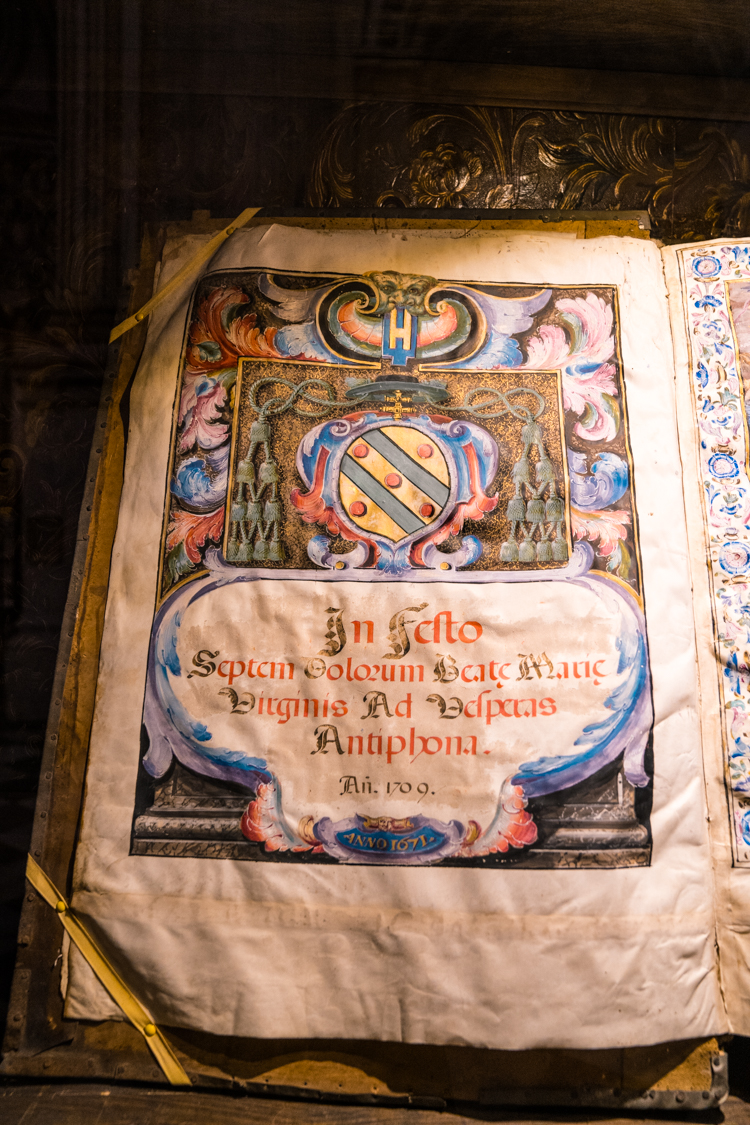
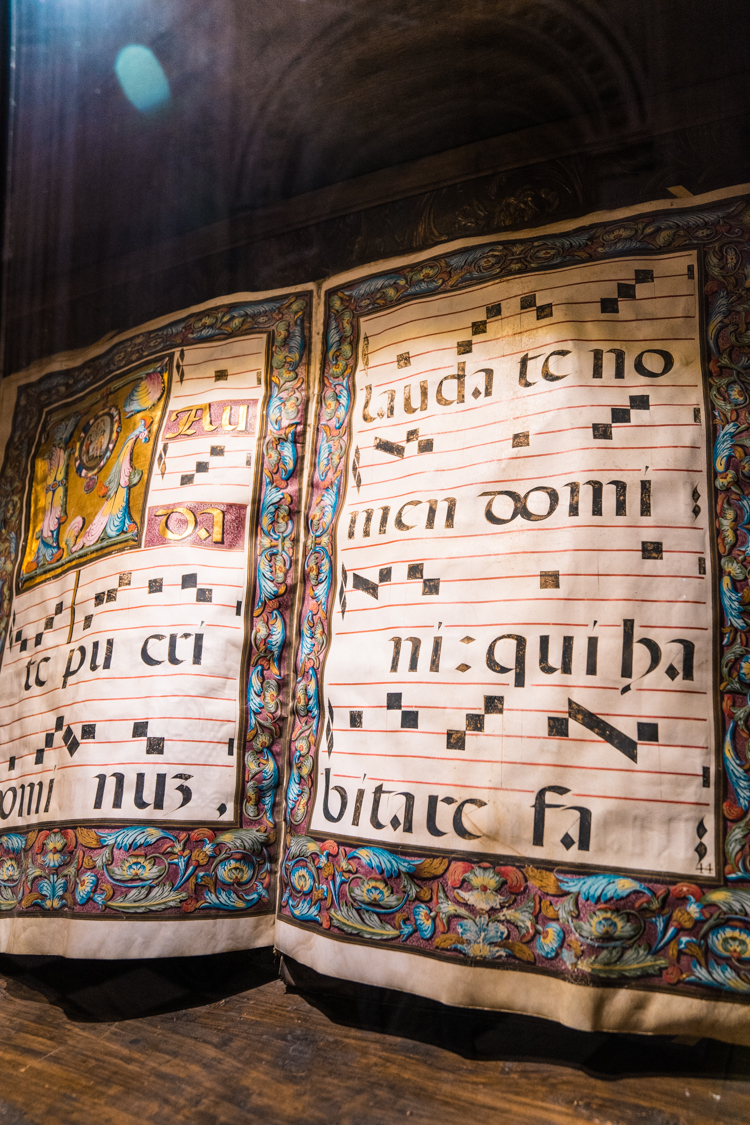
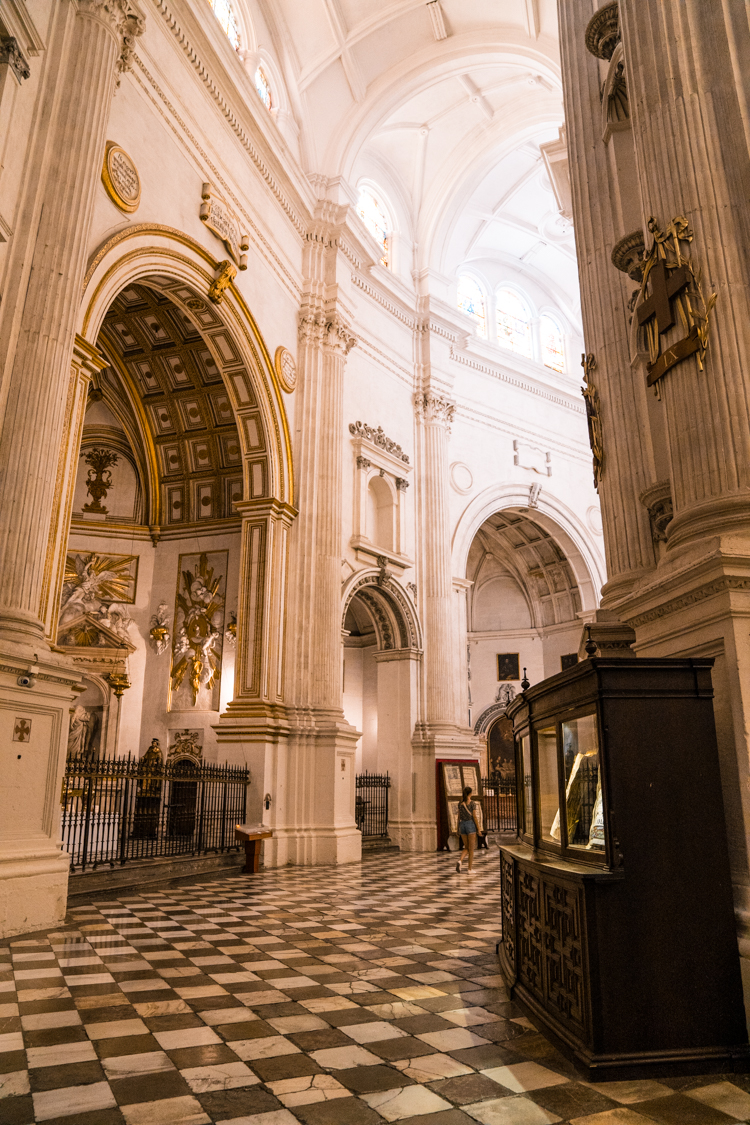
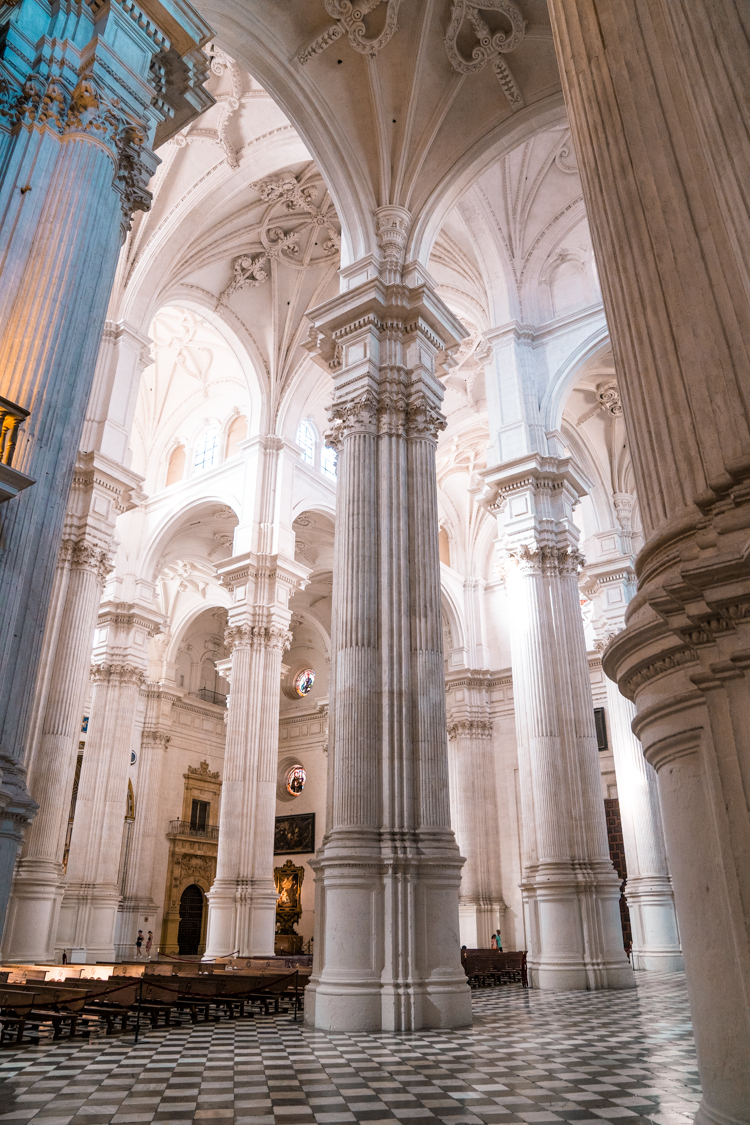
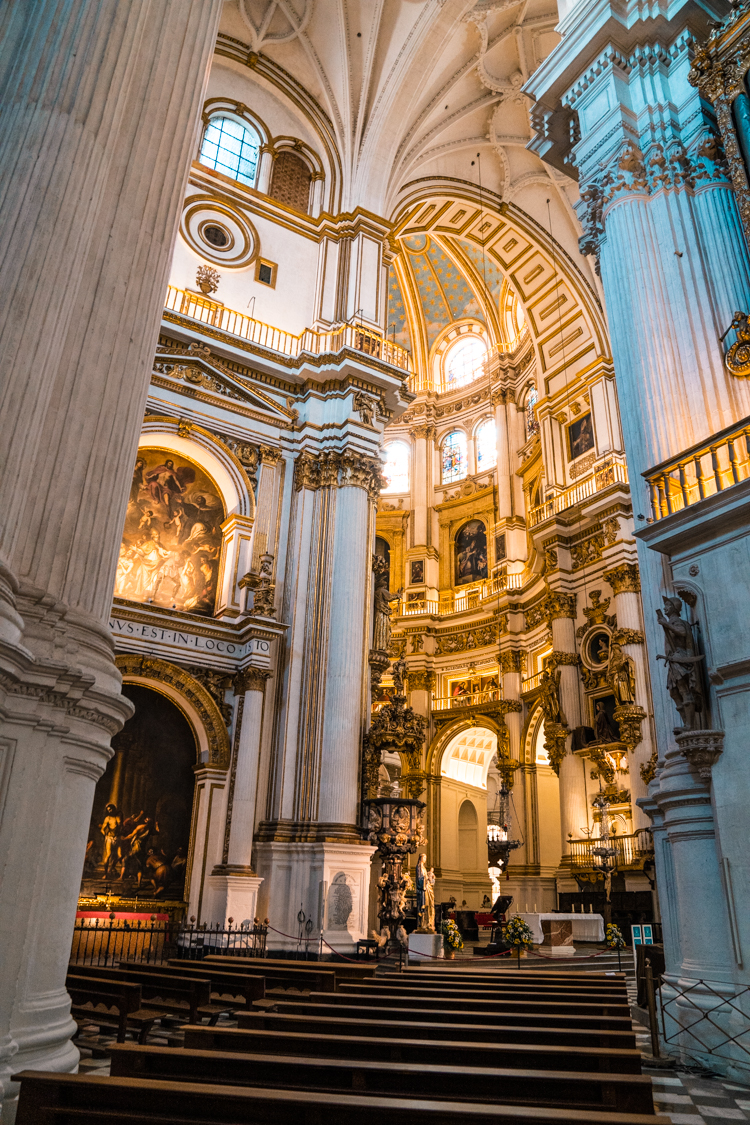
Tips for Visiting Granada Cathedral
Joint Tickets for Monuments
If you’re planning to visit more than just the Cathedral, on their website you can find good value discounted tickets that will allow you to visit all the important monuments of Granada, including the Sacromonte Abbey, Monastery of St Jeronimos and others. You can buy 5 tickets at once and save 33%.
The details are on their official page here.
Finding the Right Entrance
I have to admit, I was completely puzzled as to where the entrance to the Cathedral may be. There were 3 to choose from, and none of them indicated clearly what is what, apart from the Royal Chappel.
We ended up waiting in the line for Royal Chappel, only to be told that the entrance to the Cathedral was from the other side.
I have marked both entrances for you on the map below. The main entrance is wheelchair accessible, the Royal Chappel wasn’t.
Avoiding Crowds
I was visiting in the middle of the summer and it was surprisingly peaceful. I think the Cathedral gets more busy in winter and autumn, as it’s the perfect rainy day activity.
Plan your day accordingly, and try to visit in the morning hours before the big guided tours get there. This time is also perfect for taking photos, as there are way fewer people.
Photography in the Cathedral
You are allowed to use the camera in the Cathedral but without a flash or tripod. In the Royal Chappel, photography is strictly prohibited.
Visiting Granada Cathedral
Opening Hours: Monday to Saturday : 10:00 a.m. to 8:15 p.m. (DOORS CLOSE 8:45 p.m.) and Sundays: 3:00 p.m. to 6:15 p.m.(CLOSING OF DOORS 18:45 h.). Always consult their official website for opening times as they do change.
Location: C. Gran Vía de Colón, 5, 18001 Granada
Ticket prices:
- General ticket: 6 euros
- Students & disables: 4.5 euros
- Kids under 12: free
Tickets: there are a few ticket options you can buy. Here is the complete list:
- tickets at the door – you can buy these directly on the day of your visit
- tickets online – directly on the website
- guided tour & skip the line ticket for Cathedral & Royal Chappel (2 hours)
- guided tour & skip the line ticket for Cathedral & Royal Chappel
Entrance to the Cathedral:
Opposite the Archibishop Palace, marked on the map below:
Entrance to the Royal Chappel:
Separate side entrance clearly marked ‘Capillera Real de Granada’.
How to get to the Cathedral:
There are several buses you can take to the Cathedral, it’s the lines: 4, 8, 11, 21, 33, the bus stop is called ‘Gran Via 1’ or Cathedral. The other buses are lines C31, C32, C34, the bus stop is called Plaza Isabel Catolica.
You cannot access the cathedral by car, it’s best to park nearby and walk there.
The cathedral is also about 10 minutes walk from Albaicin.
Explore More in Granada
Carmen de la Victoria, Granada: Tranquility Meets History
Casa del Chapiz, Granada: A Photo Tour
Alhambra Tickets: Buy Online with Insider Tips
Sacromonte Caves Museum in Granada: Worth a Visit?
Sacromonte Abbey: Underground Treasures in Granada
7 Best Walking Tours in Granada: Expert Tips
Disclaimer: This post contains affiliate links – if you decide to book using one of the links, I will earn a small commission that helps me run this site. This is at no extra cost to you.


